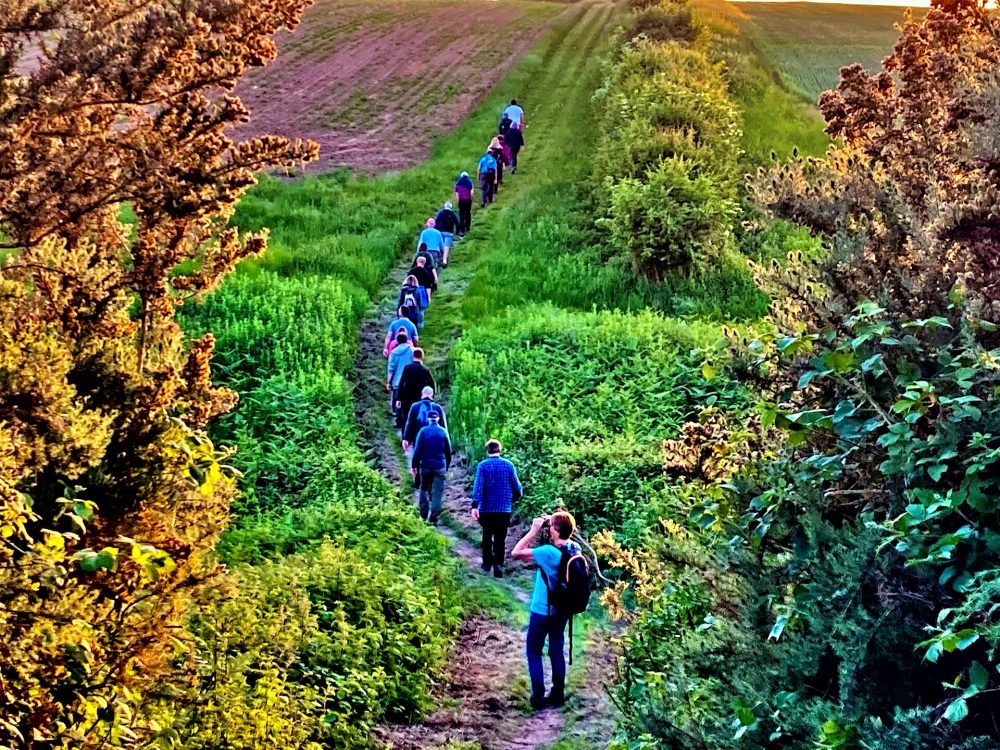Text and photos by Patrick Meehan
It was a little after 6:45PM as we roved out – all 21 of us – on one of Ian Robinson’s Friday evening walks. This evening we were doing a roughly elliptical walk that would start and finish at The Ship, the ever-popular pub and restaurant in Levington village. https://www.debeninns.co.uk/ship/
In his pre-walk notes, Ian advised the walk would be a little over 5 miles long and would take just over two hours; and so it was.
Starting out from The Ship’s car park in a balmy 18°C, we soon gained, and followed, the coastal path, making good time around Levington Lagoon. Following the path, which forms part of what is designated the Stour and Orwell Walk, we soon came to Levington Pond, with the iconic cranes of Felixstowe lining the horizon to the south-east, across the River Orwell.
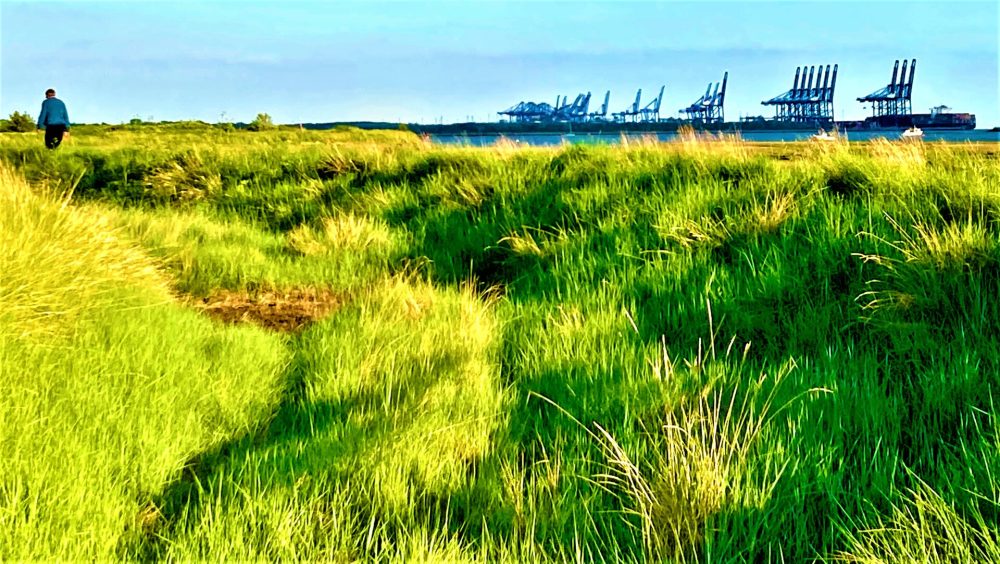
On the coastal path near Levington Pond, Suffolk
Continuing along the path towards Suffolk Yacht Harbour, we soon came in sight of the familiar line of Lombardy poplars to the north, standing erect like toy soldiers facing towards the river.
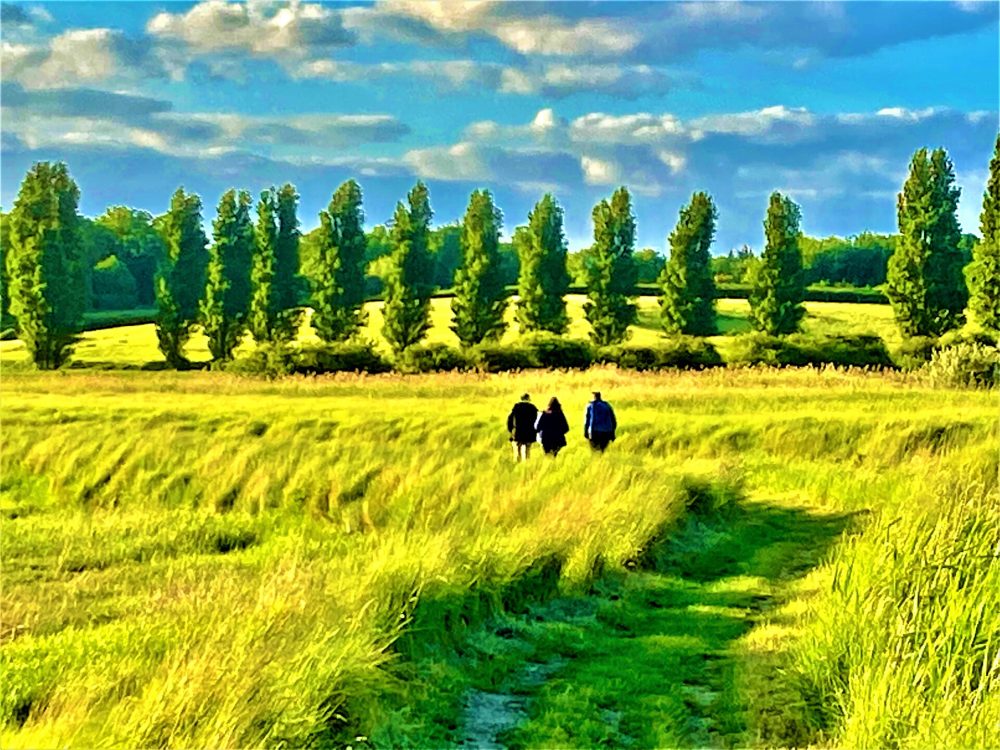
Despite the balmy temperature, a chill breeze blew in off the river as we rounded Suffolk Yacht Harbour, and those wearing fleeces or similar warm attire were glad of the extra layer.
For many on the walk, Loompit Lake was the highlight of the evening. Although Ian had said the lake was famous for its abundant bird life, we could not have anticipated the colony of swans we found feeding there. They were dotted around the lake against a dappled background of yellow and green woods that were reflected in the shimmering surface, and their glorious forms were like blobs of zinc-white paint on an artist’s canvas. Indeed, they were like something Claude Monet might have knocked out after a good day at the Île de la Grande Jatte on the River Seine.
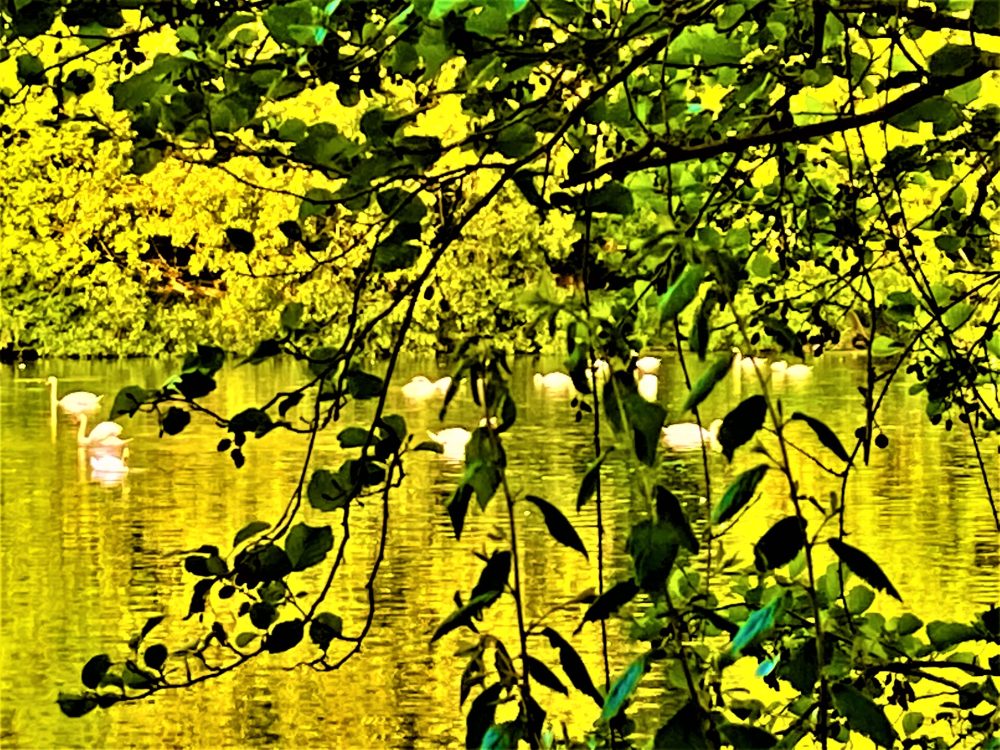
At the south-east corner of the lake, and shortly before turning inland to commence our return leg, Ian mentioned that the lake was relatively shallow, being less than a metre deep in places, and therefore an ideal feeding ground for visiting bird life. Landscape Britain tells us that 190 species have been recorded within a five-mile radius. The lake was formed by the devastating floods of 1953; a combination of high spring tides and a storm surge had caused the sea levels to rise more than five metres above normal levels. The surge travelled down the Suffolk coast and breached the sea wall at Loompit to create the lake.
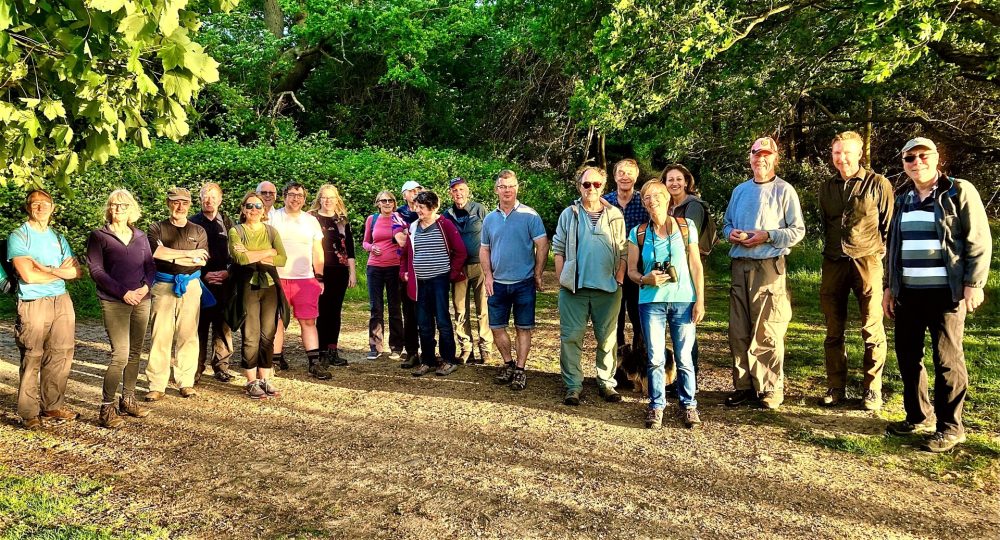
As we wound our way, first east, then west back towards Levington village through narrow lanes of giant hemlock and dense hedging, Wordsworth’s ‘darling of the Spring’, a cuckoo, was heard in the nearby woods, and quite brought to mind the poet’s reverential work about this somewhat mystical and well-travelled wanderer:
To the Cuckoo by William Wordsworth (Abridged)
O blithe New-comer! I have heard,
I hear thee and rejoice.
O Cuckoo! shall I call thee Bird,
Or but a wandering Voice?
While I am lying on the grass
Thy twofold shout I hear;
From hill to hill it seems to pass,
At once far off, and near.
Thrice welcome, darling of the Spring!
Even yet thou art to me
No bird, but an invisible thing,
A voice, a mystery;
The same whom in my school-boy days
I listened to; that Cry
Which made me look a thousand ways
In bush, and tree, and sky.
To seek thee did I often rove
Through woods and on the green;
And thou wert still a hope, a love;
Still longed for, never seen.
The complete, unabridged version can be found here: https://www.poetryfoundation.org/poems/45562/to-the-cuckoo
On a more practical note, the cuckoo is one of the most travelled of migratory birds. According to the BBC, one cuckoo was satellite-tracked on its journey from Zambia to Mongolia, a distance of more than 7,500 miles. This is considered to be one of the longest migration routes by any animal ever recorded. https://www.bbc.com/news/science-environment-52815286
Further along the trail and just south of Strattonhall Drift, we came to the well-known ‘Strattonhall Dip’ (see main photo above), and were quite taken by the colours in the landscape, particularly when set against the yellow-flowering gorse (Ulex europaeus) at the top of the incline.
Further along Strattonhall Drift, and now quite close to Levington, the landscape opened up to reveal the northern end of Levington Lagoon and the surrounding countryside. In the gloaming, it wasn’t hard to understand what the artist John Constable meant when he said that Suffolk had a particular light not to be found anywhere else in the world.
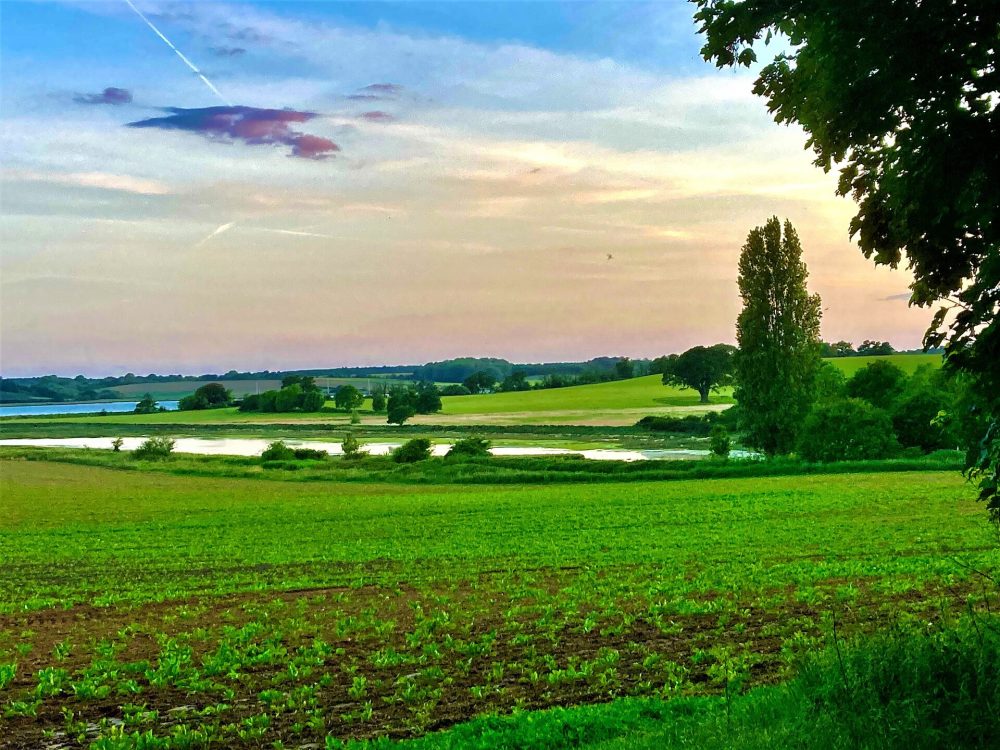
As we neared our destination and a well-earned drink at The Ship, it seemed a quietness was descending on the world. The chill wind had abated somewhat; there was little or no traffic on the narrow country lanes; and the blackbirds’ evensongs were fading in the dying of the light as they settled down to roost after another busy day of belting out their favourite mating and territorial airs. A day spent in glory, indeed.
